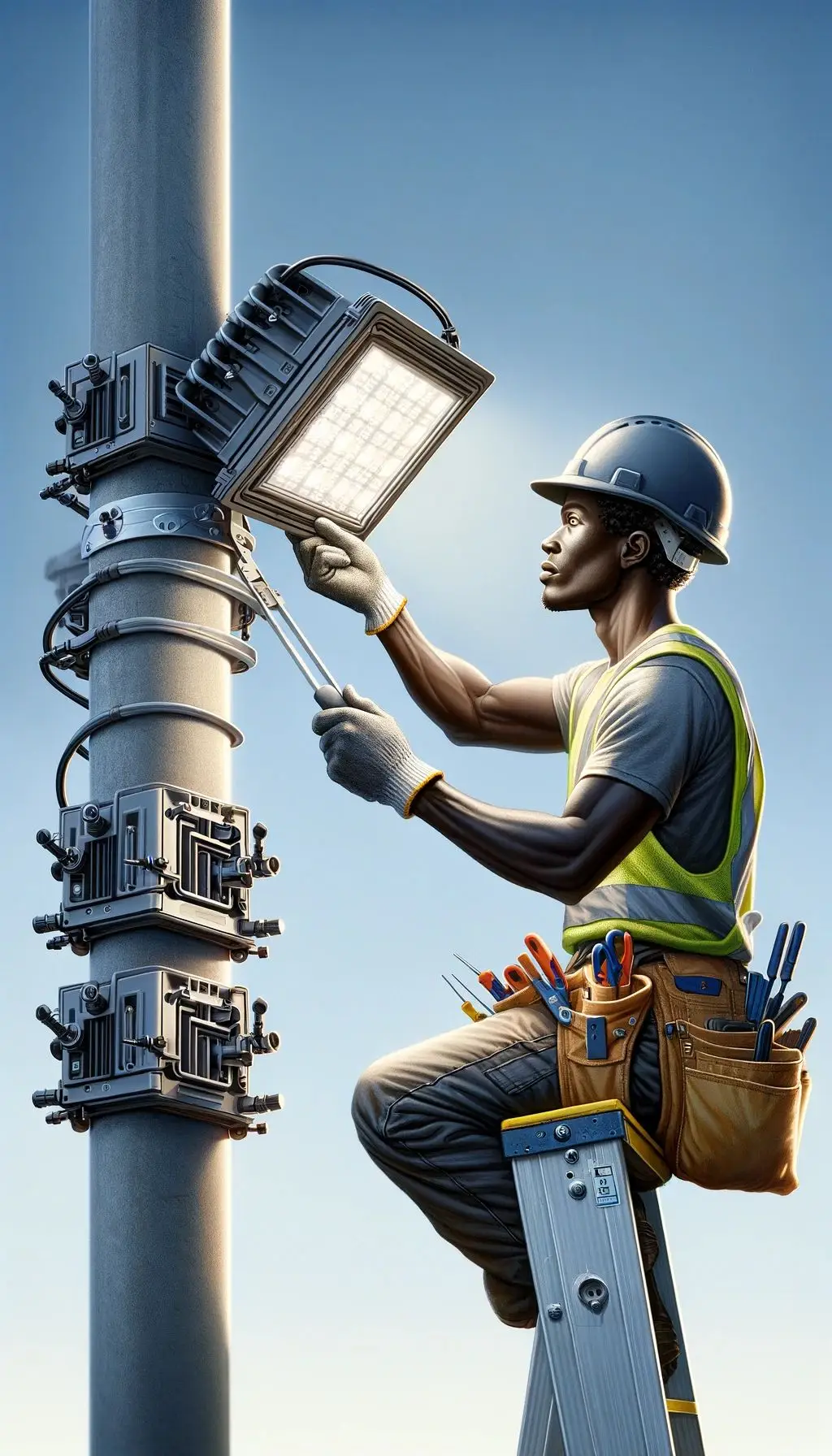Have you ever wondered why those sleek LED lights in office buildings and retail spaces work so seamlessly? Well, here’s the thing – behind every efficient LED lighting system, there’s an unsung hero quietly doing its job: the LED driver. You might not think about it much, but these essential components are what keep your commercial lighting running smoothly and efficiently.
In today’s energy-conscious world, LED lighting has become the go-to choice for commercial spaces. But here’s what many people don’t realize – LEDs can’t just be plugged directly into your standard power supply. That’s where LED drivers come into play, working their magic to ensure your lighting systems perform at their best.
Understanding the Basics: How Do LED Drivers Work?
Let’s break this down into something we can all understand. Think of an LED power supply as a super-smart translator between your building’s power supply and your LED lights. Your standard electrical outlet pumps out a relatively constant voltage, but LEDs need something different – they require a steady stream of regulated current to function properly.
The Core Function of LED Drivers
LED drivers perform three crucial functions:
- Converting AC to DC power
- Stepping down voltage to an appropriate level
- Regulating current to prevent LED damage
Here’s what makes them special: LED power supply units take the alternating current (AC) from your power supply and convert it into the direct current (DC) that LEDs need. But they don’t stop there – they also ensure the voltage and current stay within the perfect range, kind of like a protective parent making sure their kid doesn’t get into trouble.
Types of LED Drivers for Commercial Applications
Constant Current LED Drivers
These are the workhorses of the LED driver world. They maintain a steady current flow regardless of voltage changes, making them perfect for:
– High-bay lighting in warehouses
– Outdoor area lighting
– Retail display lighting
Constant Voltage LED Drivers
Think of these as the more flexible option. They’re ideal for:
– LED strip lighting
– Signage
– Architectural lighting features
Smart LED Drivers
Now we’re talking about the future of lighting! These advanced drivers offer:
– Wireless control capabilities
– Integration with building management systems
– Real-time monitoring and adjustment features
Selecting the Right LED Driver: Key Considerations
Power Rating and Efficiency
When choosing LED power supply units for lighting applications, you’ve got to consider both the input and output power requirements. A good rule of thumb is to select a driver with:
– Output power rating 10-20% higher than your LED load
– Efficiency rating of at least 85%
– Power factor of 0.9 or higher
Environmental Factors
Don’t forget about where your LED power supply units will be living! Consider:
– Operating temperature range
– IP rating for moisture protection
– Ventilation requirements
Dimming Capabilities
Are all LED drivers dimmable? Not necessarily! You’ll need to specifically look for:
– 0-10V dimming capability
– DALI compatibility
– Phase-cut dimming support
 |
Installation and Maintenance Best Practices
Installation Tips
Let’s get practical here. When installing LED power supply units:
- Ensure proper ventilation – yes, LED drivers do get hot!
- Keep wire lengths as short as possible
- Follow manufacturer’s mounting instructions
- Maintain proper spacing between drivers
Maintenance Considerations
Prevention is better than cure, right? Here’s what to keep an eye on:
– Regular visual inspections
– Temperature monitoring
– Performance testing
– Connection checks
Troubleshooting Common LED Driver Issues
Signs You Need Replacement LED power supply units
Sometimes, things just don’t go as planned. Watch out for these red flags:
– Flickering lights
– Unexpected dimming
– Complete failure to power on
– Unusual buzzing sounds
Diagnostic Steps
Before rushing to replace that driver, try these steps:
- Check input power
- Verify connections
- Test LED load
- Measure output voltage
The Future of LED Drivers
Emerging Technologies
The world of LED power supply units is constantly evolving. Keep an eye out for:
– Artificial Intelligence integration
– Enhanced energy efficiency
– Improved wireless capabilities
– Smaller form factors
Sustainability Considerations
The future is green, and LED power supply units are no exception:
– Recyclable components
– Longer lifespans
– Reduced energy consumption
– Smart power management
Frequently Asked Questions
Q: Do LED drivers get hot during operation?
A: Yes, LED drivers do generate heat during operation. However, proper installation with adequate ventilation helps manage this heat effectively.
Q: How long do LED drivers typically last?
A: Quality LED drivers can last 50,000 to 100,000 hours when properly maintained and operated within specifications. Read more about Commercial LED Lights Lifespan here.
Q: Can I use any LED driver with my lighting system?
A: No, you need to match the LED driver to your specific lighting system’s requirements, including voltage, current, and power ratings. Read more Line Voltage vs Low Voltage Lighting here.
Q: Are all LED drivers dimmable?
A: No, not all LED drivers support dimming. You need to specifically choose a dimmable LED driver if you want dimming capability.
Q: How do I know when to replace my LED driver?
A: Look for signs like flickering lights, inconsistent performance, or complete failure. Most quality LED drivers should last 5-7 years under normal conditions.
Conclusion
LED drivers are the unsung heroes of commercial lighting systems, quietly ensuring your LEDs perform at their best. Whether you’re managing a retail space, warehouse, or office building, understanding LED drivers is crucial for maintaining efficient and reliable lighting systems.
Remember, choosing the right LED driver isn’t just about matching specifications – it’s about considering your specific application, environment, and future needs. With proper selection, installation, and maintenance, your LED drivers will provide years of reliable service, keeping your spaces brilliantly lit while maximizing energy efficiency.
As lighting technology continues to evolve, LED drivers will play an increasingly important role in smart building systems. Staying informed about these developments will help you make better decisions for your commercial lighting needs, ensuring you’re always ahead of the curve in energy efficiency and lighting performance.
Your message has been sent
